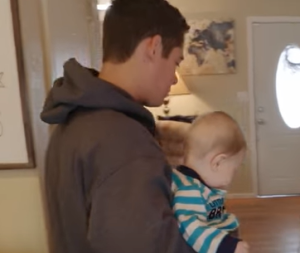Making mac and cheese for the first time is usually a rite of passage, especially for those who are accustomed to the convenience of boxed meals. For Juan, this simple task was not only a culinary challenge but also a cultural exploration that revealed the differences between his Colombian roots and American dining customs. As he stood in the kitchen, chaos swirling around him with three boys vying for attention and two of them feeling under the weather, he was not just cooking; he was weaving together threads of family, tradition, and the challenge of adapting to a new culture.
The Breakfast Request
It all began with a simple request for breakfast—mac and cheese. The notion of having this creamy dish so early in the day seemed unusual, yet appealing. Juan, armed with brightly colored packaging that promised a quick meal, followed the instructions as he stirred macaroni into boiling water. But as he added butter, cheese, and milk, doubt began to creep in. This didn’t feel right. In Colombia, cooking was an art—a labor of love where fresh ingredients were always prioritized, and packaging was seldom employed. The boxed convenience of American mac and cheese was foreign to him, and he felt an unsettling apprehension about what his creation would ultimately look like.
The Struggle of Adaptation
As he juggled the demands of feeding three energetic boys and managing the chaos that a sick household often brings, Juan felt the pressure mounting. Cooking for children was no easy feat, especially when they were predisposed to be picky eaters. He stirred the pot with a sense of urgency, trying to balance the boiling water and the growing suspicion that his mac and cheese might resemble something much less appetizing. The boys’ collective curiosity about the meal turned to skepticism, and he found himself fraught with anxiety. Would they enjoy the dish he was so earnestly preparing, or would it be another failed attempt in the eyes of his family?
As he continued to cook, Juan remembered the first time he had seen mac and cheese prepared in America—cheesy and gooey, a nostalgic homage to comfort food. Now, standing in his own kitchen, he felt cut off from that ideal. In Colombia, meals were not just about taste but also about the experience of cooking together, the beauty of communal meal preparation, and the stories shared around the dinner table. This stark contrast deepened his sense of displacement, challenging his perception of what a simple meal could mean in a new culture.
A Culinary Disaster
As the timer dinged, anticipation turned to horror. Rather than the creamy, rich dish he envisioned, Juan’s creation resembled a soupy concoction that bore little resemblance to true mac and cheese. He could almost hear the boys recoil at the sight—this was not the comforting meal they had dreamed of. “Mom! This isn’t mac and cheese!” one of the boys exclaimed, a mixture of confusion and disappointment plastered on his face as he peered into the pot. “It looks disgusting!” Like a fragile moment in a farcical play, Juan felt the full weight of failure crushing down.
It was a humbling experience, filled with laughter and honest critique—an accidental comedy of errors that the family would tease him about for months to come. Children can cut straight to the chase, and their honesty offered a bittersweet reminder of the challenges that come with blending cultures, especially in the kitchen. In the aftermath of the disastrous culinary endeavor, the laughter that bubbled out of the awkward moment made Juan realize that, despite the mess, there was value in this chaotic breakfast experience. It was an opportunity for humility and connection, for him to embrace his new life fully.
Finding Joy in the Journey
Despite the disastrous outcome, the event was not a total loss. It presented a crucial lesson about resilience in the face of culinary failure and a reminder that embracing mistakes is inherently part of the cooking journey. Juan learned to take it lightly, recognizing that becoming adept in a new culture’s cuisine would take time and practice. More importantly, he discovered the joy of trying, the camaraderie it creates, and the laughter that is often the most crucial ingredient in any meal.
As the family gathered around the breakfast table, the humor of the situation drew them closer together. They reminisced about their own home-cooked meals, sharing stories from their past, enveloping the morning in warmth that transcended the failed dish. In that moment, they weren’t just enjoying a meal; they were crafting memories, strengthening family bonds, and celebrating the journey of adaptation.
Through the lens of mac and cheese, Juan’s first cooking experience became a story of both cultural exploration and the inevitable chaos of family life. It taught him that every misstep in the kitchen could lead to greater understanding and connection amongst family members, creating cherished moments along the way. Ultimately, this culinary mishap did more than just serve as a humorous anecdote; it was a reminder of the absurdity and beauty of life’s unpredictable twists, especially within the heart of a multicultural family trying to find their way together.





